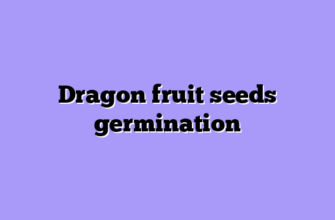The dragonfruit varieties called Asunta 1 and 2 should not be confused. Are they very different from each other? Want to know more? Then read our article.
Description
Asunta 2 Dragon Fruit is a cross between Hylocereus stenopterus hybrid and Hylocereus guatemalensis. The gene of the hybrid mix also comes from the species undatus. Asunta 2 is the second copy in the series Asunta.
This variety was made by crossing the Condor variety with the Asunta 1 sort. Compared to Asunta 1, the fruit of this cross is a little bit bigger and a different color.
| Origin: | California |
| Peel color: | Green |
| Flesh color: | Pale pink flesh |
| Mature height: | 4 - 10 ft. |
| Sun: | Full to part sun |
| Hardiness: | Around 30 degrees |
| Water: | Low-medium |
| Brix: | ~19-23 |
| Pollination: | Self-sterile |
| Weather tolerance: | 4 out of 5 |
| Fruit production: | 3 out of 5 |
| Flavor: | 5 out of 5 |
| Home planting: | 3 out of 5 |
| Commercial planting: | 3 out of 5 |
As with other Hylocereus stenopterus clones, the growth of Asunta 2 is soft and three-sided. It grows quickly and only has a few spines. Each piece of stem is between 2 and 3 feet long and looks light green. Asunta 2 has four to five a flushes per year. Cross-pollination is needed for fruit to grow.
Fruits are usually small and in the shape of eggs. They usually weigh between 0,5 and 0.75 pounds. The inside of the fruit is light pink, and the outside is dark red, almost maroon, with green fins. With a refractometer, the average score for Brix was 22. The pale flesh did not taste like it looked. Surprisingly, the fruit tasted like flowers and had a hint of coconut.
The flower is small to medium-sized, and the inside petals are purple, but the edges and tips are light pink and white. The flower bud is just as beautiful as the flower itself. In Louisiana, the flower blooms at night and closes in the morning. Compared to other types of Hylocereus, this one blooms a lot earlier. The stigma sticks out a few inches from the anther once the flower has opened.
Asunta 2 is sterile, which makes sense since all of her other clones were also sterile. The buds and blooms, both when they are closed and when they are open, look like the Kathie Van Arum variety, which is also a clone of Hylocereus stenopterus.
My Journey with Asunta 2 Dragon Fruit
Let me tell you, farming ain’t all sunshine and rainbows. It’s a constant battle against the elements, a symphony of trial and error, and sometimes, a surprising dance with the unexpected. That’s exactly how my love affair with the Asunta 2 dragon fruit began.
I’d always been a dragon fruit enthusiast. The way their vibrant scales cloak a treasure trove of juicy flesh is like unwrapping a present every harvest. But then I stumbled upon the Asunta 2 – a variety that defied expectations. Who would’ve thought a green-skinned fruit, resembling a prehistoric kiwi on steroids, could hide such a delicate secret within?
The first time I held an Asunta 2 in my hand, it felt like a smooth, cool gemstone. Its scales, a captivating blend of emerald and lime green, boasted these curious, fleshy fins that trailed down its sides. It wasn’t the fiery red or electric purple I was used to, but there was an undeniable charm to its understated elegance.
Cracking it open felt almost like a transgression. The peel yielded with a satisfying snap, revealing a pale pink flesh that blushed like a shy debutante. It was a stark contrast to the vibrant hues I normally encountered. But then came the aroma – a sweet, heady fragrance that swirled with hints of floral notes and a whisper of coconut. It was intoxicating!

Now, the Asunta 2 might not be the most visually impressive dragon fruit on the block. It lacks the flamboyant flair of its red brethren. But here’s the thing: beauty comes in all shapes and sizes, and this little green orb is a testament to that. It’s a sleeper hit, a hidden gem waiting to be discovered.
Growing the Asunta 2 has been an adventure in itself. These plants are surprisingly resilient. They thrive in the same conditions as other dragon fruit varieties – full sun, well-draining soil, and a good support structure. But they seem to have a bit more tolerance for slightly cooler temperatures, which makes them a good option for farmers in regions with unpredictable weather.
The downside? They’re not the biggest producers. The fruit size tends to be on the smaller side, averaging around half a pound each. But what they lack in size, they make up for in flavor. Plus, their smaller stature makes them perfect for container gardening, meaning even city dwellers can enjoy the magic of the Asunta 2.
Here’s the thing about farming: it’s not just about the bounty you harvest, it’s about the journey. The Asunta 2 has been a delightful surprise, a testament to the unexpected beauty and flavor that can lie hidden beneath the most unassuming exterior. It’s a reminder that sometimes, the most rewarding finds are the ones you least expect. So, the next time you’re at the farmer’s market, don’t be afraid to give the green, scaly oddball a chance. You might just discover your own little pale pink pearl.

Conclusion
This variety is the first improvement of Asunta 1 (H.Stenopterus x H.Guatemalensis hybrid) pollinated with Condor. It was made by Edgar Valdivia, a member of the California Rare Fruit Growers group. The pink flower can’t reproduce on its own, so it needs to be pollinated by something else.
Asunta 2 makes a lot of sweet fruits that taste a little bit like tropical punch / coconut with lychee. 19-21 is the average brix (23 when the fruit is fully ripe). The fruit weighs between 0.5 and 0.75 pounds and has a peach-colored skin with lime-colored fins. The inside is pale pink.








